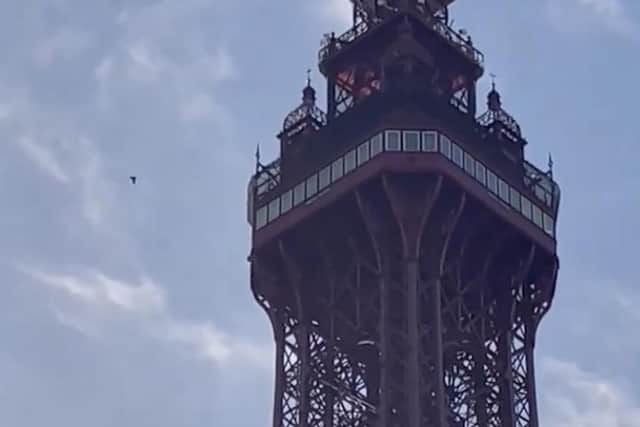Blackpool Tower 'fire' - Police issue statement confirming 'blaze' at landmark is in fact orange netting
and live on Freeview channel 276
A 'fire' at the top of Blackpool Tower on Thursday afternoon proved to be a false alarm. After reports of a blaze at the iconic landmark, police later confirmed it was in fact orange netting blowing in the wind.
The first reports came shortly after 2pm with six fire crews scrambled to Blackpool promenade at one point. A drone and rescue team were also in operation with people urged to stay away from the area. It transpired there was no fire, but police did however reveal an arrest had been made.


Advertisement
Hide AdAdvertisement
Hide AdA statement read: "We know there are reports of a fire at Blackpool Tower and we just wanted to give you an update from our Divisional Commander Ch Supt Karen Edwards. We are at the scene in support of Lancashire Fire and Rescue Service, Blackpool Council and Merlin Entertainment.
"The top of the tower is currently closed for renovation and difficult to access. Our helicopter has flown over the tower and there is no fire. We can confirm what can be seen is orange netting. One man has been arrested on suspicion of Breach of the Peace and is being transported to custody."
Lancashire Fire and Rescue Service said in a post on X: “Lancashire Fire and Rescue Service were called to Promenade, Blackpool today by concerned members of the public, due to a combination of factors that led them to believe it was a fire.
“The area where the fire was suspected is generally inaccessible, therefore access to this area is difficult. A specialist team from Lancashire Fire and Rescue Service gained access and confirmed that there was no fire. This incident was supported by the National Police Air Service, who used thermal imaging which provided further assurance.”